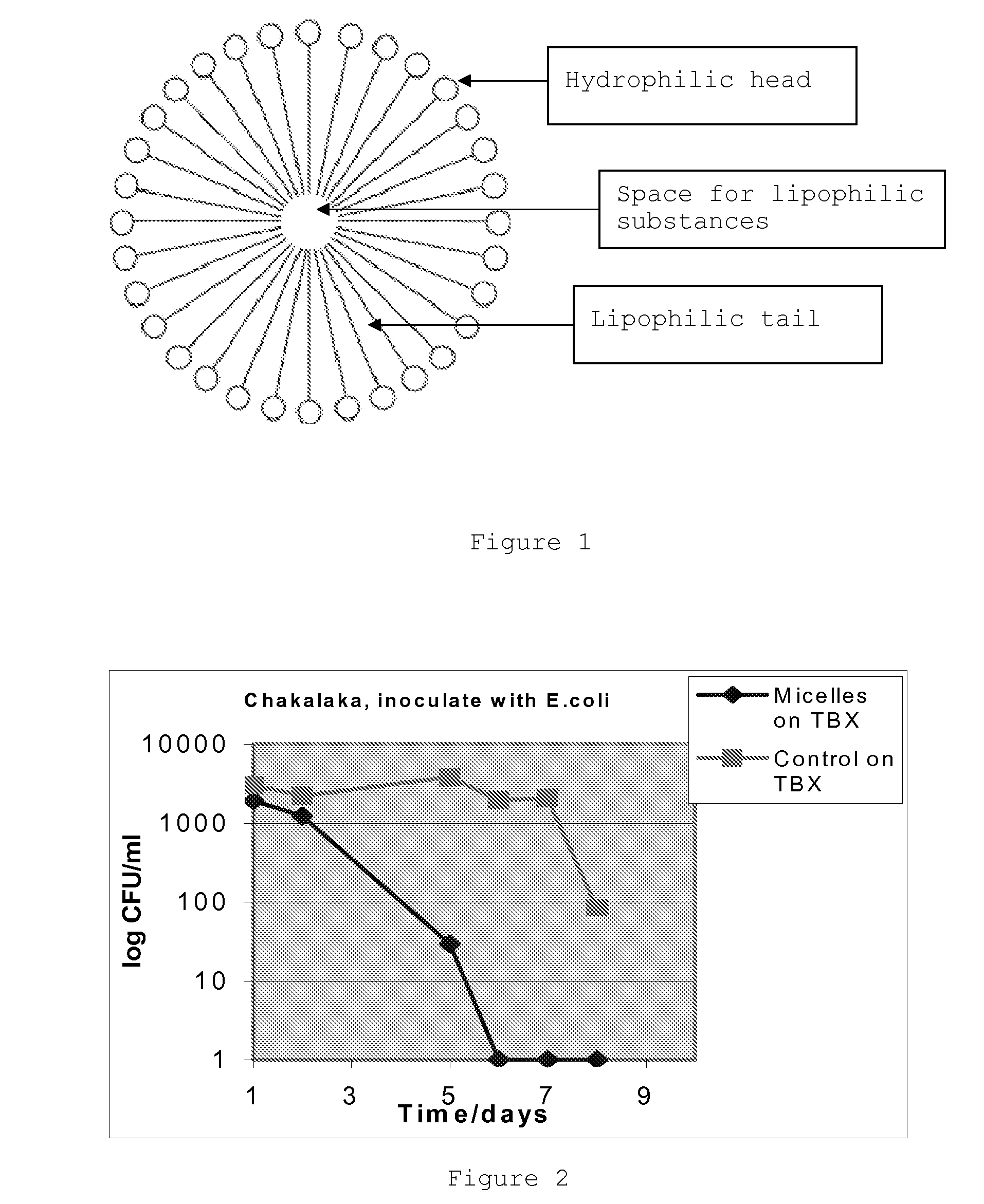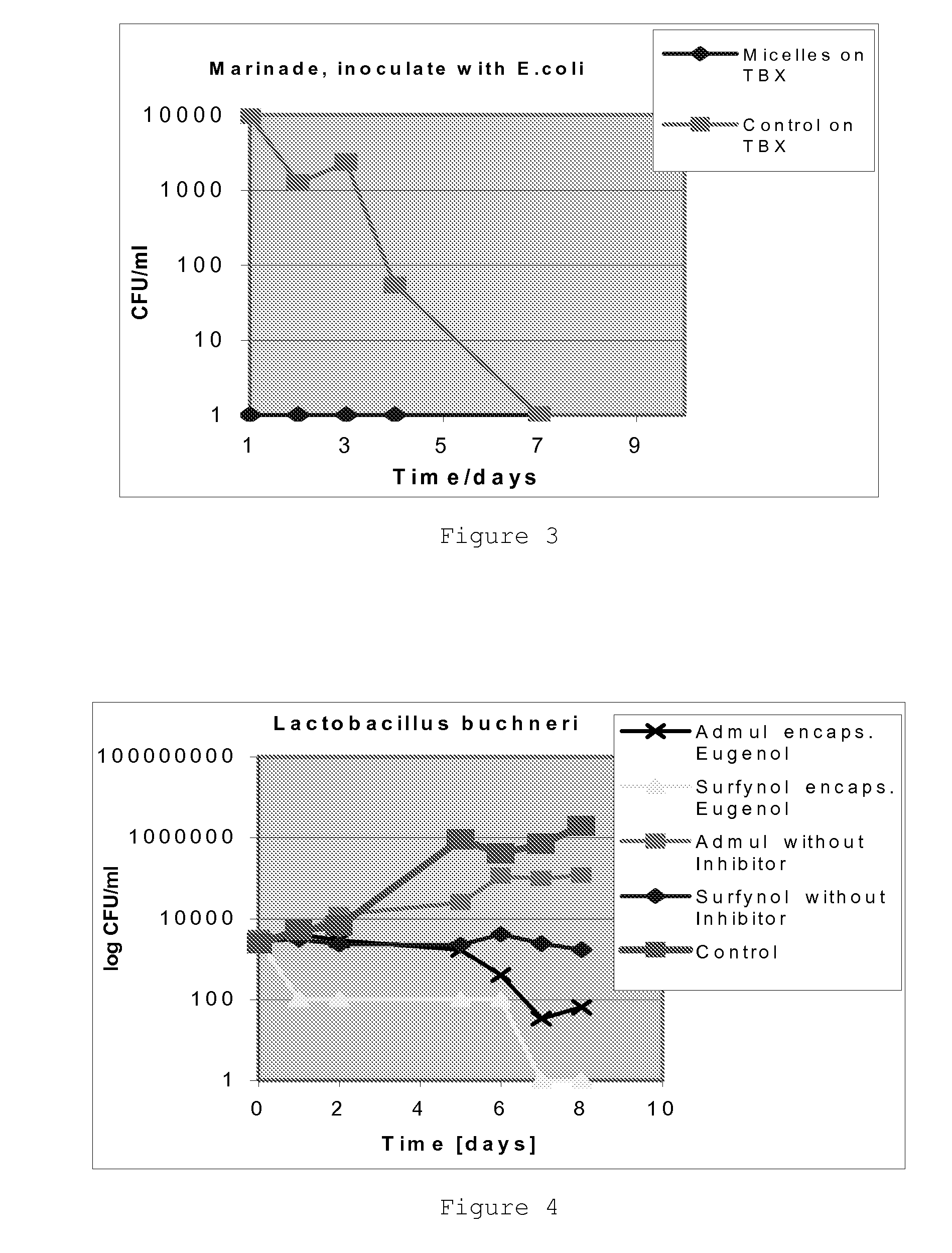Antimicrobial micelles for food applications
a technology of antimicrobial micelles and food applications, which is applied in the field of antimicrobial micelles for food applications, can solve the problems of widespread use still being harmful to some consumers, affecting the safety of microorganisms in food, and affecting the health of consumers, so as to improve the microbiological safety and stability of foods, and the effect of stable microorganism spoilag
- Summary
- Abstract
- Description
- Claims
- Application Information
AI Technical Summary
Benefits of technology
Problems solved by technology
Method used
Image
Examples
example 1a
In Vitro Testing
[0069]Used culture media:[0070]M.R.S.-Bouillon, Merck, 1.10661[0071]Brilliant Green Bile 2% (Broth), Oxoid, CM0031[0072]Peptone from casein pancreatically digested, Merck, 1.07213[0073]D(+)-Glucose, Merck, 1.08337
[0074]Used agars:[0075]M.R.S. Agar, Oxoid, CM 0316[0076]Tryptone Bile X-glucuronide Agar, Merck, 1.16122
[0077]Used emulsifiers:[0078]Surfynol 495W, Air Products Nederland BV, S-485W[0079]Admul T 80 K, Kerry Bio-Science, 5Z10754
[0080]Used essential oil components:[0081]Eugenol, Fluka, 41600[0082]Carvacrol, Fluka, 22051[0083]R(+)-Limonene, Fluka, 62119
[0084]Used microorganisms:[0085]Lactobacillus buchneri DSM 20174 418* / #[0086]E. coli SLV 082 504*
[0087]All emulsions were prepared with distilled and deionised water.
[0088]The “empty” micelles were produced by mixing the emulsifier with water.
[0089]The aim was to encapsulate in these micelles the main components of essential oils with antimicrobial effects.
[0090]These components were eugenol, R-Limonene and carva...
example 1b-1d
[0106]The same in vitro conditions as described above were used to test the antimicrobial properties of micelle encapsulated essential oils, notably clove oil, oregano oil and mustard oil.
example 1b
[0107]As can be seen on FIG. 6, Salmonella spp. was inactivated by all three essential oils. Oregano oil shows the strongest inactivation since it is able to kill Salmonella spp. rapidly within approximately five minutes after inoculation.
PUM
 Login to View More
Login to View More Abstract
Description
Claims
Application Information
 Login to View More
Login to View More - R&D
- Intellectual Property
- Life Sciences
- Materials
- Tech Scout
- Unparalleled Data Quality
- Higher Quality Content
- 60% Fewer Hallucinations
Browse by: Latest US Patents, China's latest patents, Technical Efficacy Thesaurus, Application Domain, Technology Topic, Popular Technical Reports.
© 2025 PatSnap. All rights reserved.Legal|Privacy policy|Modern Slavery Act Transparency Statement|Sitemap|About US| Contact US: help@patsnap.com



